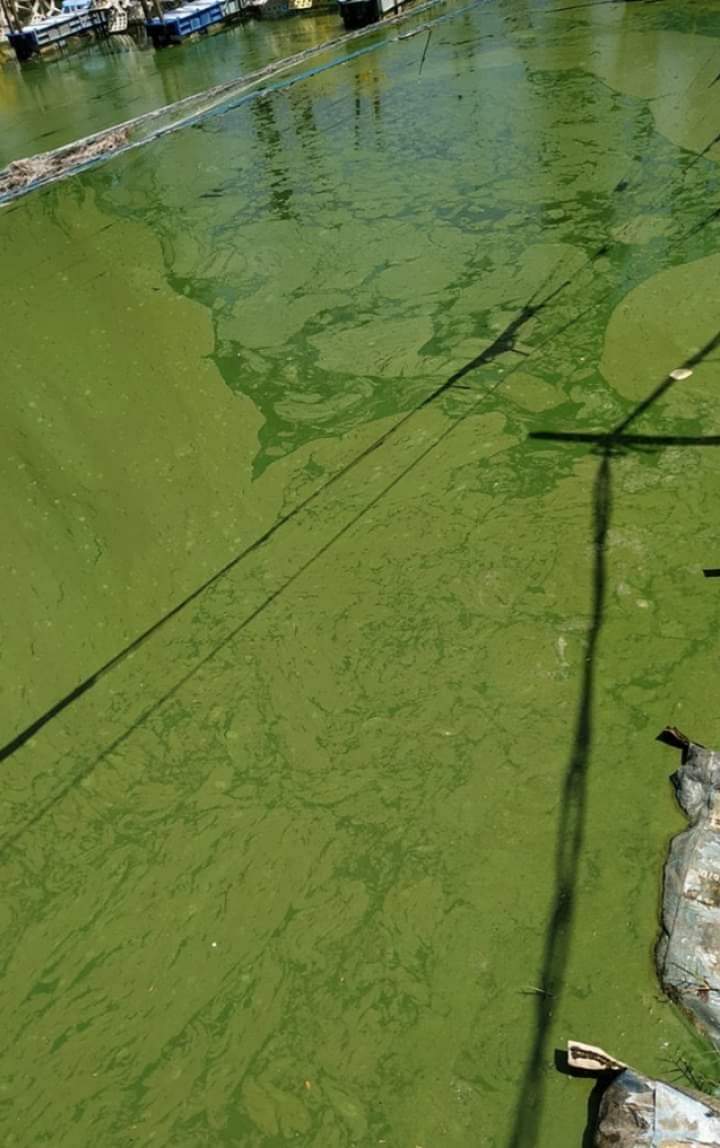BySri S.Rajamanickam
Asst.chief Technical officer,
ICAR-CIBA
The main reasons for strong growth of algae are various. It might be because of poor food management, which causes residual food to accumulate on the bottom of the pond, shrimp’s feces during the whole crop, dirty bottom of pond due to improper construction process of the pond. It might be due to unpredictable weather which changes very fast between hot sunshine and nonstop rain. Continuous rain causes salinity of farming pond to decrease quickly and stratify water surface to create best conditions for harmful algae to grow.There will be green scum on pond’s surface. Under hot and strong sunlight, it floats on the water surface and at the end of wind flow. Prolonged hot weather together with sudden thunderstorms changes the environmental factors in the pond swiftly. As a result, the process of decomposing organic residue increases. It produces many nutrients to facilitate harmful algae in farming pond.
Handling this situation, farmers need to have solutions to overcome and prevent toxic algae in shrimp farming ponds. Required conditions for algae to grow are nutrient in water and light. And so, lessening nutrient in water is a method to limit excessive algae growth. There are always some useful techniques to prevent algae growth such as removing of dead algae, changing water in farming pond in case the sedimentation pond has been treated. It is recommended as it helps to reduce the density of algae in farming pond. At the same time, it is necessary to control food without excess feeding and treat algae by probiotics ferment with molasses afterbeing incubated from 3 to 6 hours over night. Combining with algae treatment using lime at night with an allowable dose of less than 20 kg for every 1,000 m3 of water.After applying lime, it is recommended to add zeolite with an amount of 20 kg for every 1,000 m3, suck up mud, regularly siphon of farming pond’s bottom and use algae killer based on CuSO4. Particularly for cyanobacteria, one of the most effective method is increasing salinity for farming pond water by supplying sea water for farming pond or adding salt into water with the amount of 10 kg of salt per 1,000 m3 hanging at propeller. Another technique to handling algae is stocking tilapia together with shrimp in same pond. Tilapia (or) milk fish often lives in the middle and bottom level of water in farming pond. It can digest 30 – 60% of protein in algae, especially cyanobacteria and green algae. It helps to stabilize water quality in pond.
Algaecides are not recommended as most chemicals cause the cells to break up and release toxins into the water that may result in fish kills.
Phosphorous can be inactivated or “bound up” using chemical additives, such as buffered alum (aluminum sulfate combined with sodium aluminate at a ratio of 2:1). Alum can be applied to the water forming a precipitate “flock” that removes phosphorous from the water column as it settles. In addition, as alum covers the bottom sediments, it binds with, and reduces or prevents, the release of phosphorous from the sediment so this nutrient is not readily available to the algae
In addition, there are some algae preventive methods as followings: farmers should not use phosphate to control water color for shrimp ponds to prevent cyanophyta.
Before stocking, it is recommended to treat the pond carefully, destroy presented algae at the bottom soil(Application of Bleaching powder 250kg/ha) dose of and around the bank of farming pond, avoid taking water from sources where algae blooms. At the same time, farmers should regularly use metal chain to release nitrogen gas accumulating atthe bottom of farming pond. Pulling chain from bottom eliminates conditions that allowing the algae to develop strongly. It is advisable to take care farming pond carefully daily to detect the appearance of cyanobacteria at the earliest possible. Doing so, the processes of algae treatment will become easier and faster. Handling dinoflagellate, farmers should avoid taking water to raise shrimp during the period when algal blooms from nearby water sources. They are not recommended to change pond water if nearby water sources have algal blooms. If farmers observe that there is a source of water nearby that does not have an algal blooms, it is recommended to select the appropriate water source to supply for farming ponds.


